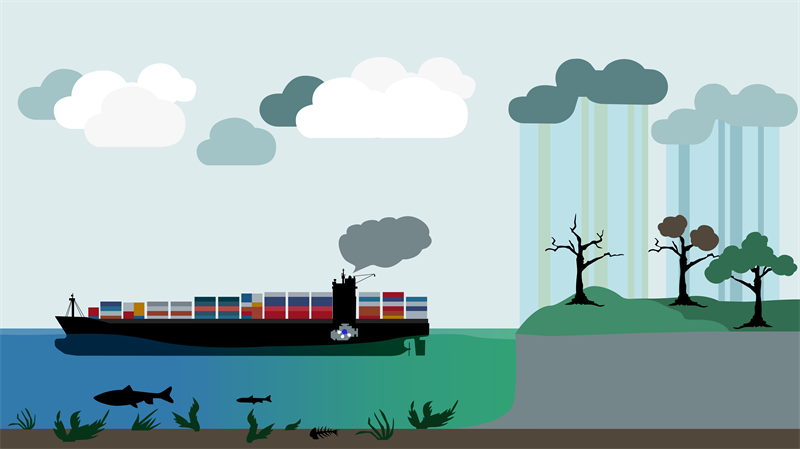Researchers Warn on Eutrophication Potential of Ammonia
Switching to ammonia as a marine fuel could create new problems, according to a new study undertaken by researchers from Chalmers University of Technology in Sweden.
The researchers carried out life cycle analyses for batteries and for three electro-fuels (hydrogen, methanol and ammonia). Eutrophication and acidification are some of the environmental problems that can be traced to the use of ammonia – as well as emissions of laughing gas (N2O), which is a very potent greenhouse gas.

Ammonia (NH3) is a carbon-free fuel and has the advantage of a higher energy density than, for example, hydrogen. It can also be liquefied fairly easily although it is a gas at standard conditions.
However, a significant disadvantage is that the production of electro-ammonia – which requires electricity – is very energy intensive. The study shows that all three green electro-fuels have a higher environmental impact than traditional fuels in terms of human toxicity, use of resources such as minerals and metals, and water use.
“Although ammonia is carbon-free, its combustion in engines is not free from greenhouse gas emissions,” says Selma Brynolf, Chalmers researcher and co-author of the research paper. “Engine tests have shown varying degrees of emissions of laughing gas, which is a very potent greenhouse gas with more than 200 times the global warming impact than carbon dioxide.”
The researchers used life cycle assessment and life cycle cost to evaluate technical viability, environmental impacts, and economic feasibility of electricity via batteries and the three electro-fuels. The energy carriers were in turn used in combination with both engines and fuel cells.
The study shows that ammonia and methanol have the lowest cost of the alternatives studied.
Fayas Malik Kanchiralla, PhD student at the Department of Mechanics and Maritime Sciences at Chalmers and lead author of the paper, said: “The market is usually drawn by costs, and since electro-ammonia has the lowest cost, the market is aiming towards it. There is a hype around this fuel in shipping today. But if, and when, we make a shift to ammonia, it is to solve the problem of using fossil fuels, and at the moment it seems like we might end up creating more problems instead.”
Ammonia comes with a set of environmental disadvantages, he said. Its use as a fuel can affect air and water quality due to ammonia leakage and emissions of nitrogen oxides such as N2O. This is particularly important in sensitive marine area such as the Baltic Sea.
“Among the environmental problems that can be traced to use of ammonia are eutrophication and acidification,” says Kanchiralla. “Even though green ammonia is a fossil-free and relatively clean fuel, it is probably not green enough for the environment as a whole. More risk assessments on the emissions of ammonia, and the related nitrogen compounds, need to be done before adopting this fuel for shipping.”
The study also showed that it is very difficult to find a simple non-fossil fuel solution that both works for all types of ships and is able to meet the goal of reducing greenhouse gas emissions in shipping.
